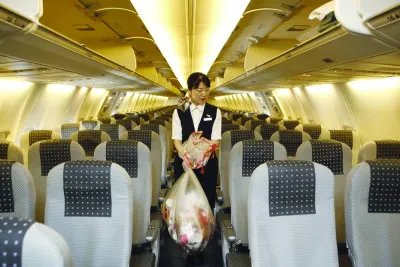Hamad Medical Corporation (HMC) warned the public about the dangers of carbon monoxide poisoning from burning coal and firewood indoor for heating.
Last winter between 70 and 100 patients were treated each month at HMC's Emergency Departments for carbon monoxide (CO) poisoning. In advance of the cooler temperatures setting in, HMC is warning residents about the dangers of burning charcoal and wood inside their homes.
‘During the colder months, we see an increase in the number of patients with carbon monoxide positioning. Many people seek ways to keep their homes warm and some resort to burning coal or wood inside. When charcoal and wood burn without oxygen, they produce fossil fuels that release carbon monoxide - a colourless, tasteless, and odorless gas. Carbon monoxide is very hard to detect, leading to people inhaling it and being poisoned. This can happen very quickly and is extremely dangerous,’ said Dr. Galal Saleh Al Essai, an Accident and Emergency Consultant at HMC.
Dr. Al Essai explains that carbon monoxide poisoning is so dangerous because the signs and symptoms can be easy to miss. He says many people with mild carbon monoxide poisoning think they have food poisoning or the flu and dismiss the symptoms. He says symptoms of carbon monoxide poisoning can start to appear within five to 20 minutes of exposure but notes that lower concentrations may lead to a delay in the onset of symptoms.
Dr. Al Essai urges anyone who develops symptoms of carbon monoxide poisoning, which can include a headache, dizziness, nausea, shortness of breath, weakness, and confusion, to get into the fresh air immediately and seek emergency medical help.
‘Most of the patients we receive at the Emergency Department show flu-like symptoms such as headaches, dizziness, disorientation, nausea, and fatigue. Some may also experience chest pain, especially those with coronary heart disease. If carbon monoxide has been inhaled in a high concentration, as is the case in the incidence of fire, patients could also experience impaired vision, confusion, and loss of coordination,’ added Dr. Al Essai.
Dr. Al Essai said last winter a number of patients were treated at HMC Emergency Departments for serious burns sustained due to using small engines, stoves, lanterns, grills, fireplaces, gas ranges, or furnaces as heating sources. He said there were also fatalities as a result of carbon monoxide poisoning.
‘Sadly there have been deaths as a carbon monoxide poisoning. These preventable poisonings were the result of smoke inhalation from the burning of coal and wood in enclosed areas. It is essential that we raise awareness about the dangers of this practice and the importance of only using approved heating appliances,’ said Dr. Al Essai.
While anyone is at risk for carbon monoxide positioning, some population groups are particularly vulnerable, including pregnant women, newborns, and young children, elderly people, and those with chronic illnesses, such as pulmonary, respiratory, or cardiovascular problems and anemia.
Dr. Al Essai recommends the following tips to prevent carbon monoxide positioning, including; never use a gas-powered generator indoors, including inside a camper or tent, ensure battery-operated electronic heating appliances are approved; approved appliances will include an approval number or mark, never burn charcoal or wood indoors, unless it is in an approved indoor wood-burning appliance, never use a gas range or oven for heating as using a gas range or oven for heating can cause a build-up of carbon monoxide inside your home, cabin, or camper, never burn charcoal indoors, and never use a portable gas camp stove indoors as using a gas camp stove indoors can cause carbon monoxide to build up inside your home, cabin, or camper. He advised keeping warm by wearing layers of warm clothing and drinking hot fluids. (QNA)



